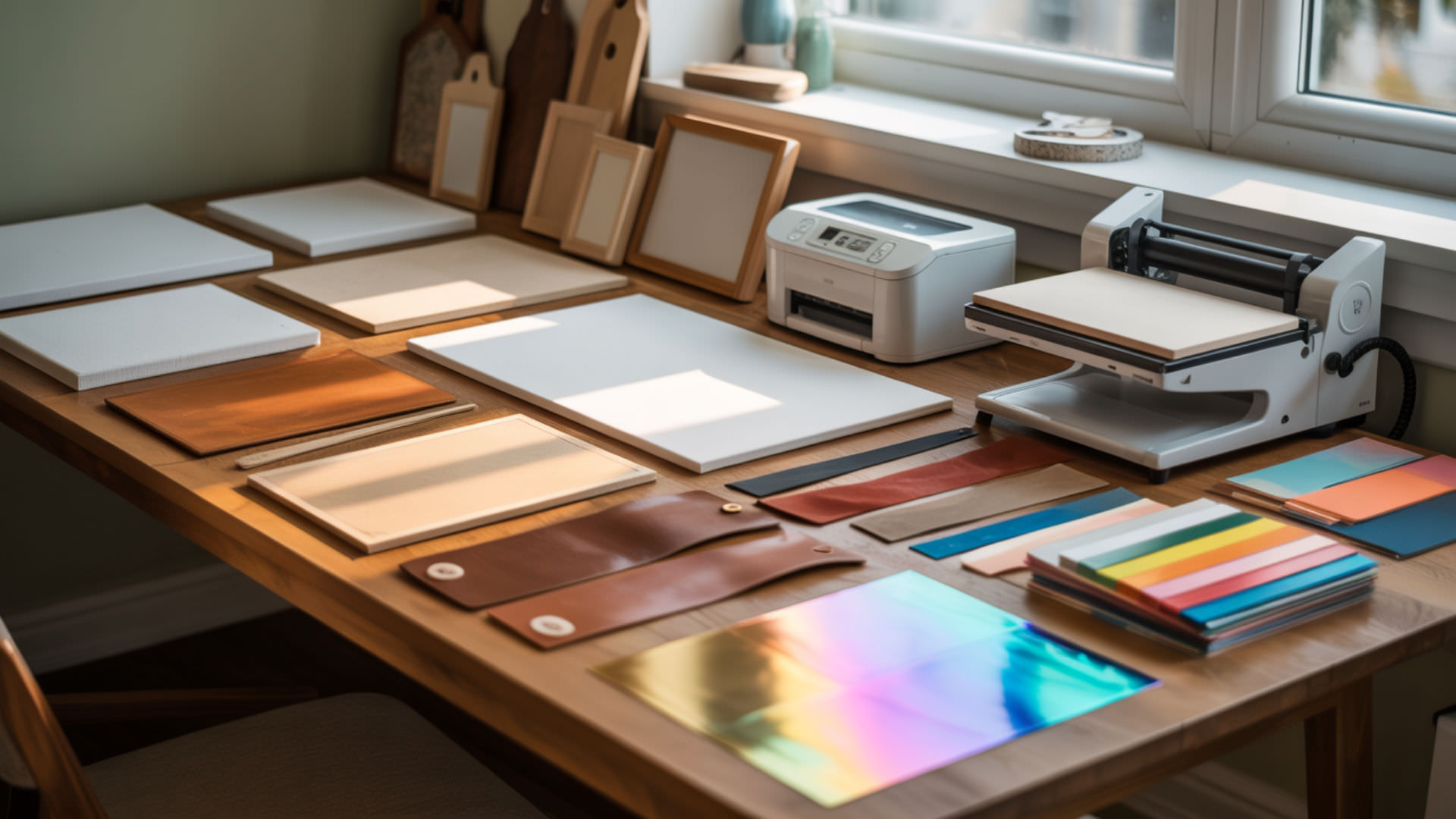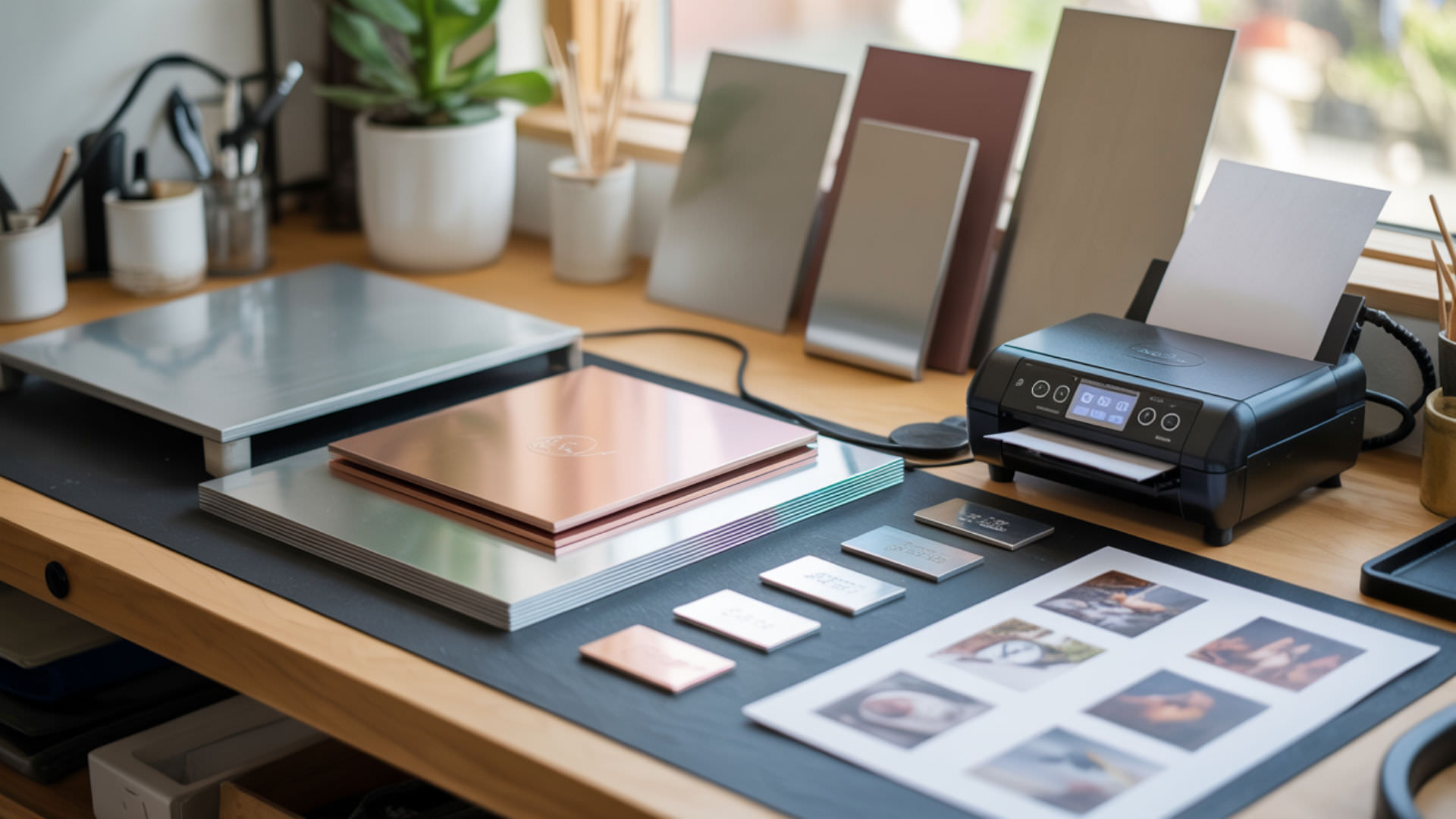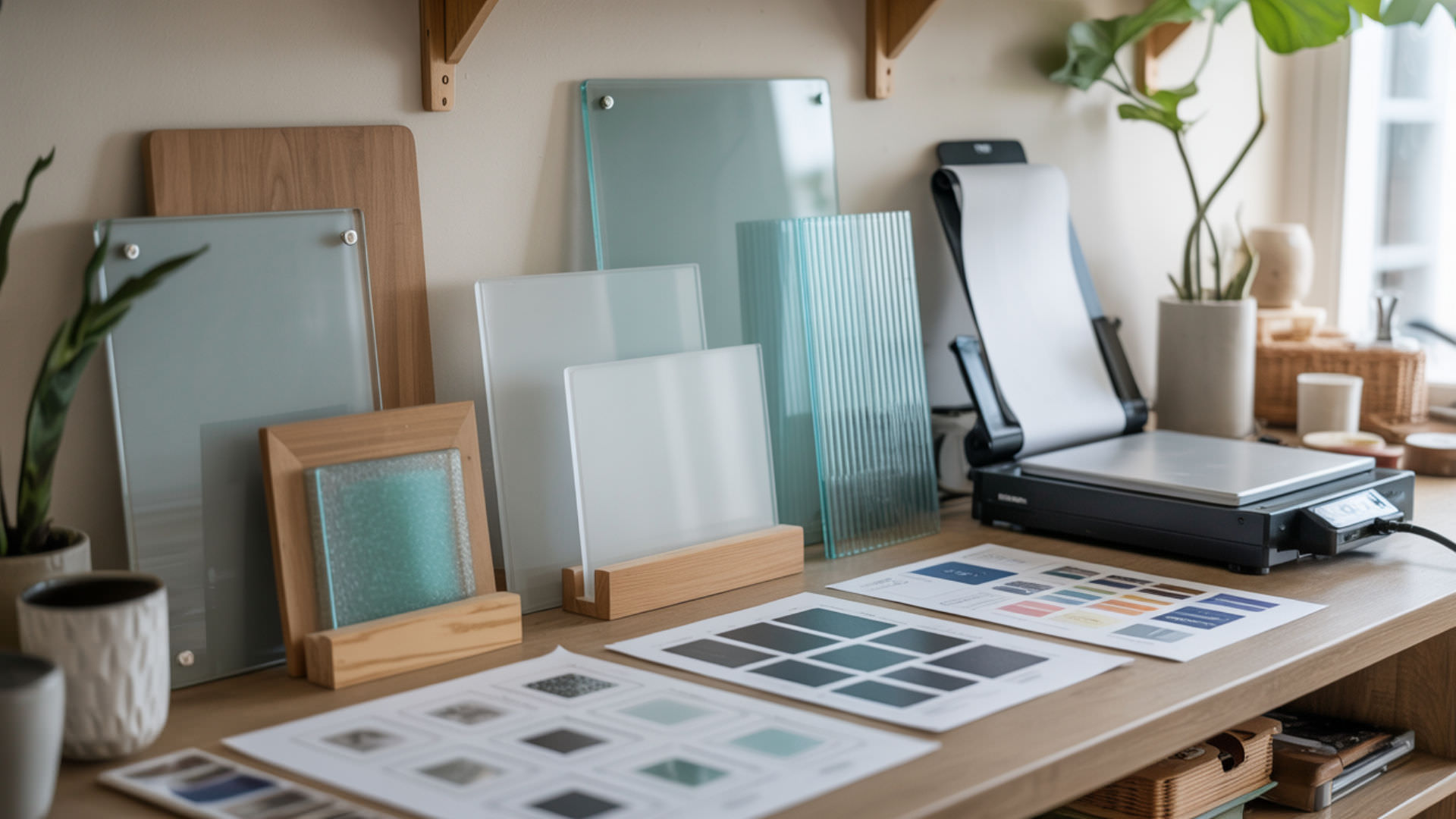Table of Contents
TogglePlastic presents unique challenges for sublimation due to its low surface energy, which prevents dye from bonding to untreated surfaces—the ink simply beads up and wipes away rather than penetrating the material. Polyester coating solves this problem by adding polymer chains that capture gaseous sublimation dye during heat transfer, creating permanent molecular bonds identical to those formed on polyester fabric. Understanding how polymer coatings enable dye bonding across different materials is covered in our comprehensive guide to sublimation on materials. Many plastics are difficult to print or coat directly because their surfaces resist wetting and bonding unless they’re specially treated or coated. [1]
Key Takeaways
- Plastic requires polyester coating to accept sublimation dye—raw plastic surfaces repel ink due to low surface energy.
- Heat sensitivity limits which plastics work for sublimation—temperatures of 375–400°F can melt or warp many common plastic types.
- Pre-coated sublimation blanks provide the most reliable results compared to DIY coating methods on raw plastic materials.
Can you sublimate onto plastic materials?

Sublimation works on plastic only when the surface contains or is treated with a polymer layer that allows dye molecules to bond at a molecular level during heat transfer. Surface energy on untreated plastic is too low for proper adhesion—sublimation ink applied to raw plastic will fade quickly, peel, or wash off entirely. Factory-coated plastic blanks designed specifically for sublimation provide consistent polyester coating thickness and adhesion, producing vibrant, durable prints on drinkware, phone cases, signage, and promotional items.
Which plastic types are compatible with sublimation transfers?
Polypropylene (PP) and polyethylene (PE) have low surface energy that requires special polyester coating or low-temperature transfer materials for successful sublimation. PET (polyethylene terephthalate) works well as coated blanks and films, commonly used for signage and packaging applications due to its heat stability. Polycarbonate and acrylic offer excellent dimensional stability at sublimation temperatures when properly coated, making them popular for durable products like photo panels and keychains.
What temperature influences successful sublimation on plastic surfaces?
Glass transition temperature (Tg) determines the point at which plastic begins softening—exceeding this threshold causes warping and deformation during pressing. Melting point establishes the absolute heat limit; pressing above this temperature destroys the substrate entirely. Press temperature for most coated plastics ranges from 330–375°F with 40–75 seconds timing, significantly lower than the 385–400°F used for ceramics and metals to prevent heat damage. Material properties determine how substances respond to heat, and exceeding thermal limits can cause plastics to soften, deform, or fail during high-temperature processes. [2]
Can hard plastics accept sublimation ink through heat transfer?
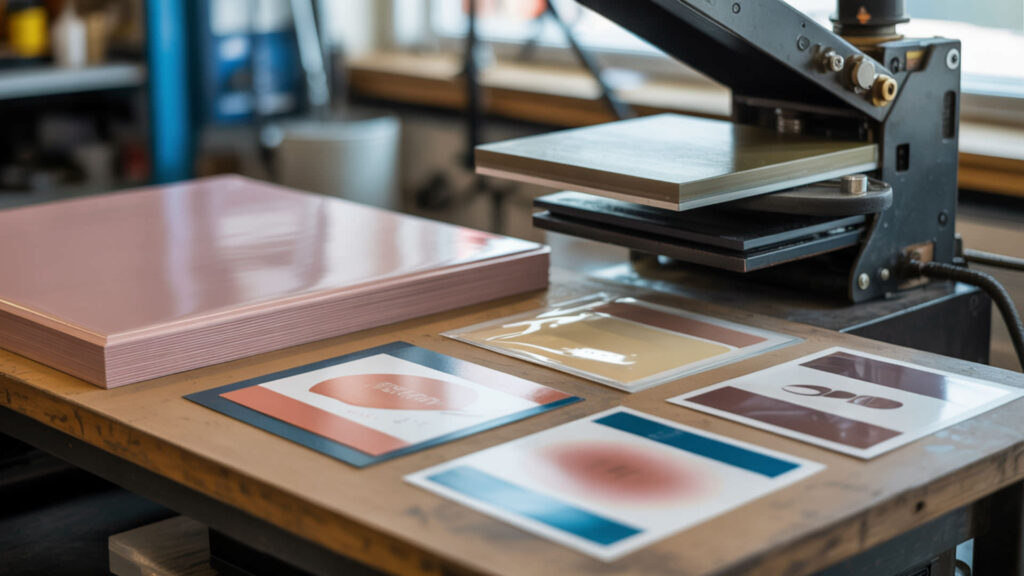
Thermosetting plastics maintain structural integrity under sublimation heat because they cure permanently and do not remelt, making them ideal substrates for high-temperature transfers. Thermoplastics like standard acrylic become pliable above their glass transition temperature and require careful temperature control to prevent warping during pressing. Hard plastics that are sublimation-coated can produce professional results—without coating, the ink transfers incompletely and produces faded or blotchy prints. For detailed guidance on rigid polymer-based materials like acrylic, see our complete guide on sublimation on acrylic.
Can PVC-based plastics be sublimated using heat safely?
PVC (polyvinyl chloride) is highly heat-sensitive and releases toxic hydrogen chloride fumes when heated above 212°F, making it unsuitable for standard sublimation temperatures of 375–400°F. Melting and deformation occur rapidly when PVC encounters sublimation heat, destroying both the substrate and potentially damaging heat press equipment. Specially coated PVC cards designed for sublimation can work at reduced temperatures around 300°F, but standard PVC products should never be used for heat transfer applications.
Can clear or transparent plastics work for sublimation transfers?
PMMA (acrylic) is the primary transparent plastic used for sublimation, offering exceptional optical clarity when designs are printed on the backside and viewed through the clear material. Backside printing on clear acrylic requires mirroring designs before printing, as the image is viewed through the substrate rather than directly on the surface. White base layer or backing is essential for color vibrancy on transparent plastics—without a white background, colors appear washed out and lack contrast. Complete preparation and pressing techniques for clear PMMA (Acrylic) products are detailed in our acrylic sublimation guide.
How do you sublimate on plastic step-by-step?

The sublimation process for plastic follows a specific sequence to ensure proper dye transfer while protecting heat-sensitive substrates from damage.
- Print design in mirror image on sublimation paper using sublimation ink—image must be reversed because it transfers face-down onto the substrate.
- Clean plastic surface with isopropyl alcohol and lint-free cloth to remove dust, oils, and fingerprints that cause adhesion defects.
- Position transfer paper face-down on coated side of plastic blank and secure with heat-resistant tape to prevent shifting that causes ghosting.
- Set heat press to manufacturer-recommended temperature (typically 330–375°F for plastics) and press for 40–75 seconds with light to medium pressure.
- Remove from press and allow cooling completely before handling—acrylic and similar plastics should be weighted flat during cooling to prevent warping.
Can everyday plastic drinkware be sublimated?

Plastic drinkware requires durable polyester coating specifically engineered to withstand repeated washing and daily use without fading or peeling. Shrink wrap provides uniform pressure around curved surfaces during pressing, ensuring complete contact between transfer paper and substrate for consistent dye coverage. Standard uncoated plastic cups will melt at sublimation temperatures—only use polymer-coated blanks rated for heat transfer applications to avoid damaging equipment and producing failed prints.
Can white plastic surfaces accept sublimation prints?
White plastic surfaces with polyester coating provide the ideal base for sublimation transfers, delivering maximum color vibrancy and contrast in finished prints. The white background allows sublimation dye colors to appear at full saturation, just as white polyester fabric produces the brightest textile prints. Colored or dark plastic blanks are available but produce muted results because sublimation ink is translucent and cannot overpower the underlying substrate color.
Does sublimation ink bond differently on cups or bottles compared to flat plastics?
Thermal conductivity differences between flat and curved plastic shapes affect how heat distributes across the substrate during pressing. Higher heat capacity in thicker-walled drinkware requires longer press times—typically 60–120 seconds compared to 40–60 seconds for thin flat blanks. Curved surfaces need specialized pressing equipment like mug presses or convection ovens with shrink wraps to maintain consistent pressure and temperature across the entire transfer area.
Can specialty or commercial plastics be sublimated?
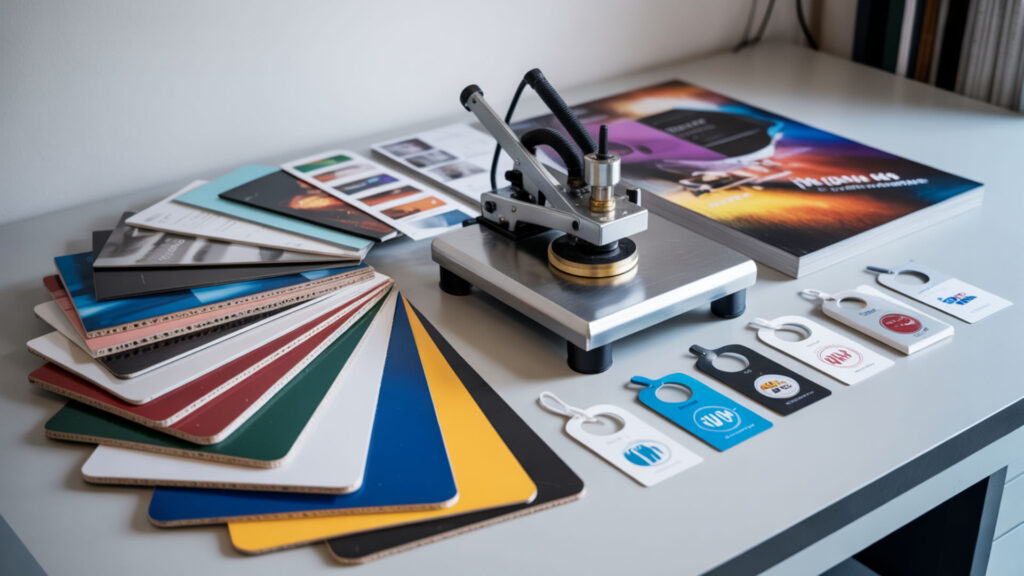
Polycarbonate provides excellent heat resistance and dimensional stability, making it popular for durable sublimation applications like safety signage and industrial labels. PET is widely used in commercial signage materials due to its stability under heat and excellent coating adhesion for long-term outdoor performance. Specialty polymer-coated plastics designed for sublimation can produce commercial-grade results for signage, promotional products, and personalized merchandise.
Can yard-sign plastics support sublimation without fading or warping?
Standard corrugated plastic sign blanks cannot be sublimated directly because they melt at temperatures required for dye transfer. Outdoor exposure causes fading on improperly coated substrates—UV-resistant polymer coatings are essential for yard signs that will face weather and sunlight. Alternative approaches include sublimating onto clear adhesive vinyl (like Oracal 651) and applying the printed vinyl to plastic signs, or purchasing specialty sublimation-coated sign blanks.
What techniques work for sublimating small plastic tags?
Keychain blanks and small tags require precise heat press settings to prevent warping from excessive heat exposure. Shorter press time of 30–45 seconds reduces risk of deformation on tiny items that absorb heat quickly due to minimal thermal mass. Use protective paper above and below small blanks to prevent direct platen contact, and allow items to cool flat before handling to maintain shape integrity.
What plastic materials deliver the best sublimation durability?

Polyester-based coatings on plastic substrates provide the strongest dye bonding and longest-lasting prints because the molecular structure matches what sublimation ink was designed to penetrate. PET blanks offer excellent durability for commercial applications, maintaining color vibrancy through handling, cleaning, and UV exposure. Thermosetting plastics hold shape best under heat and provide stable substrates that resist warping during pressing and cooling. For detailed evaluations of coating quality and blank suppliers for optimal polyester-coated plastic products, see our guide on best sublimation blanks for different materials.
Can sublimation be layered over vinyl safely if needed for color correction?
Sublimation HTV (heat transfer vinyl) is specifically designed to accept sublimation ink and withstand pressing temperatures of 370–385°F for 40–50 seconds. Standard HTV and regular vinyl cannot tolerate sublimation heat and will melt, shrink, or release fumes when exposed to high temperatures. Polymer content in sublimation-compatible vinyl provides the receptive surface layer required for dye bonding—only use products specifically labeled for sublimation applications.
How long can sublimation ink be pressed on acrylic-style plastics before damage risk increases?
PMMA (acrylic) becomes soft and pliable at sublimation temperatures, requiring careful timing to prevent deformation—typically 45–60 seconds at 375–385°F with light pressure. Excess press time beyond 60–90 seconds causes visible softening, bubbling, or permanent warping in acrylic-style plastics, especially on thinner blanks. Melting point of acrylic is approximately 320°F, so pressing temperatures must be precisely controlled to sublimate ink without exceeding safe exposure limits.
Ready to Sublimate on Plastic?
Polyester coating is the core requirement for successful sublimation on any plastic substrate—without this polymer layer, dye cannot bond and prints will fail. Start with pre-coated sublimation blanks from reputable suppliers to eliminate coating variables and ensure consistent, vibrant results on your first attempts. Test temperature and timing on sample pieces before production runs, as plastic heat tolerance varies significantly between substrate types and thicknesses.
Frequently Asked Questions
Can sublimation transfers fail if the plastic surface is uncoated or overheated?
Uncoated plastic cannot accept sublimation ink because the low surface energy prevents molecular bonding—dye simply sits on the surface and washes or wipes away. Overheating above 375–400°F causes warping, melting, and deformation that destroys both the print and the substrate. Press temperature must stay below the plastic’s glass transition temperature to maintain structural integrity throughout the transfer process.
Can sublimation ink dry lighter on hard plastics over time?
Properly sublimated prints on quality polyester-coated blanks resist fading because dye bonds permanently at molecular level beneath the coating surface. Fading typically indicates incomplete dye transfer from insufficient temperature, pressure, or time during the original pressing process. UV exposure can fade unprotected prints over time—use UV-resistant coatings or sealants for outdoor applications requiring long-term color retention.
Do thicker plastics require different paper positioning or press timing?
Thicker plastic substrates have higher heat capacity and require extended press times of 60–120 seconds compared to 40–60 seconds for thin blanks to achieve complete dye penetration. Paper positioning remains consistent—always secure transfer paper with heat-resistant tape to prevent shifting that causes ghosting regardless of substrate thickness. Use silicone pads beneath thick blanks to ensure even pressure distribution across potentially uneven surfaces during pressing.
Can white or opaque plastics shift sublimation colors more than clear plastics?
White opaque plastic provides the truest color reproduction because sublimation ink is translucent and requires a white background for full saturation. Clear plastics display colors accurately when viewed through the material against a white backing, but appear washed out without proper background support. Coating formulation affects color accuracy more than opacity—quality coatings from reputable suppliers deliver consistent color matching across both clear and opaque substrates.
What storage conditions help preserve sublimated plastic prints long-term?
Store sublimated plastic items away from direct sunlight and UV exposure, which can cause fading over extended periods even on properly pressed prints. Avoid extreme temperature fluctuations that may stress plastic substrates and potentially affect coating adhesion over time. Handle with clean hands to prevent oil transfer that can attract dirt to printed surfaces, and clean gently with mild soap and water rather than abrasive cleaners.
References
- About plastic products and plastic pollution. (2024, November 21). US EPA. https://www.epa.gov/plastics/about-plastic-products-and-plastic-pollution
- Material and energy efficiency: A framework for broader analysis of energy use in the U.S. economy. (n.d.). Energy.gov. https://www.energy.gov/eere/analysis/articles/material-and-energy-efficiency-framework-broader-analysis-energy-use-us




